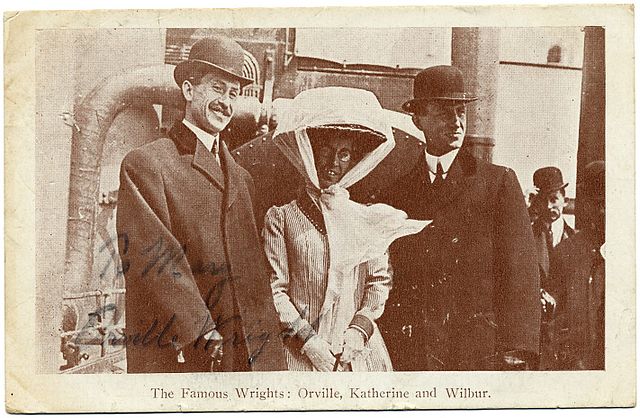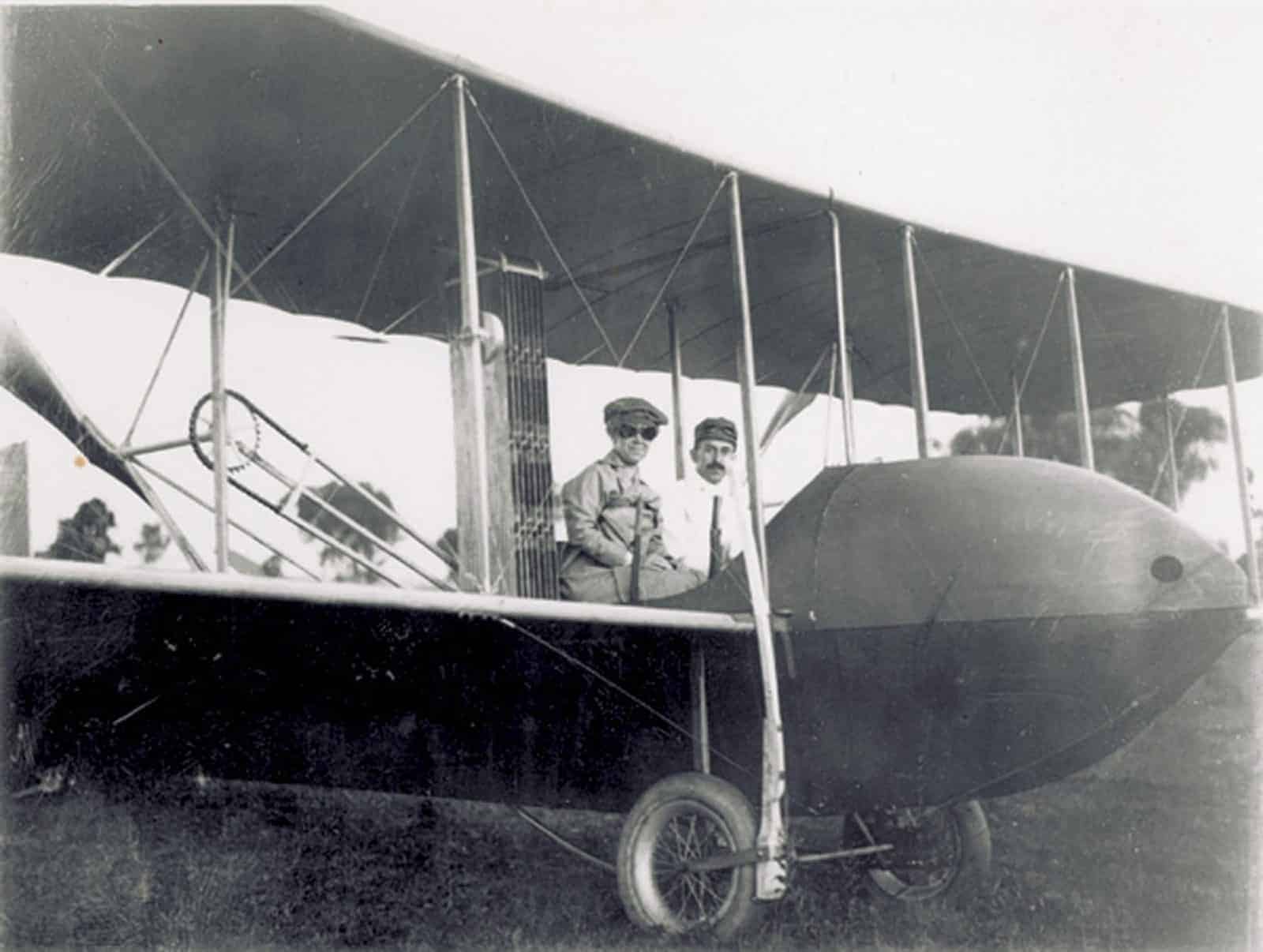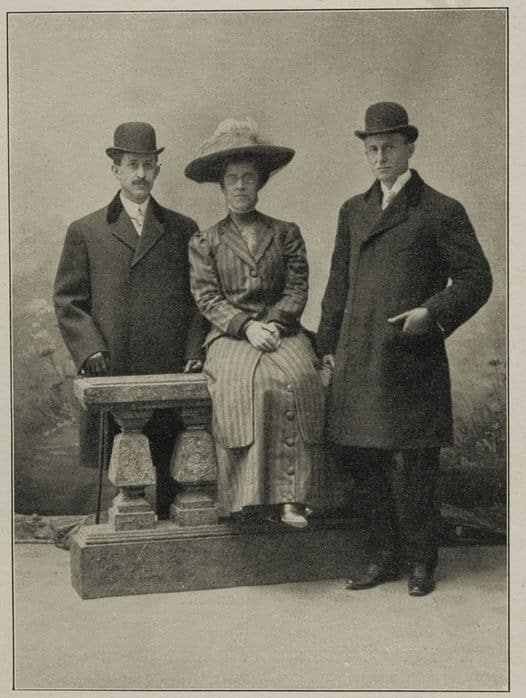Katharine Wright: The Woman Behind The Wright Brothers’ Success
The story of the Wright brothers’ first powered flight in 1903 is well-known, but their success wouldn’t have been possible without their extraordinary sister, Katharine Wright.
While Orville and Wilbur focused on engineering and flying, she managed their business affairs, handled public relations, and maintained social connections.
Katharine Wright ran the Wright household

Katharine Wright, born in Dayton, Ohio, in 1874, was the only daughter of Susan and Milton Wright. She had four older brothers but was particularly close to Orville and Wilbur. Some historians speculate they made a pact to remain unmarried and dedicated to each other.
According to PBS, she “was essentially the only female figure in Orville and Wilbur’s adult lives.”
After their mother died when Katharine was 15, she took over managing the household and became skilled at social interactions through hosting her father’s guests.
Unlike her shy brothers, Katharine was outgoing and confident, a trait her biographer noted by saying Orville and Wilbur were “not the kind of guys you would want to invite to dinner.”

Katharine, the only Wright with a degree, graduated from Oberlin in 1898. She briefly paused her studies to care for Orville when he fell ill but returned to complete her education.
By 1901, she was teaching full-time, yet she still supported her brothers’ ventures in printing, bicycle repair, and eventually aeronautics.
Wright-Brothers.org noted that Katharine “watched her brothers evolving work on the problem of manned flight with a mixture of interest, annoyance, humor, encouragement, and admiration.”
Katharine encouraged her brothers to present their work

While Orville and Wilbur worked on their experimental glider in Kitty Hawk, Katharine Wright managed their business affairs running smoothly. She paid bills, handled correspondence, and responded to scientific inquiries as their work gained attention.
In 1901, after a disappointing test flight, Wilbur was invited to speak at the Western Engineering Society. Feeling like a failure, he planned to decline, but Katharine insisted he go.
She found him a better suit and helped him prepare. Amazingly, the speech was well-received and revitalized the brothers’ spirits and public interest.

The brothers built a wind tunnel and tested over 200 wing designs. They finally achieved powered flight on the dunes at Kitty Hawk in 1903.
She even organized local teachers to help set up the launching platform and equipment when they moved back to Ohio. By 1905, her brothers had developed a more practical flying machine. The Wright Flyer III successfully flew for 24 miles.
In a 1909 interview, Katharine said, “I think I know every mistake and every success that the boys have made.” She believed in her brothers, and she made efforts to ensure they could focus on achieving powered flight.
She supported Orville after his accident

In 1908, during a test flight at Fort Myer, Virginia, a crash seriously injured Orville and killed his passenger, Lt. Thomas Selfridge.
Upon hearing the news, Katharine immediately took a leave of absence from her teaching job and rushed to Orville’s bedside to ensure he received the best care. She stayed with him throughout his seven-week hospital stay and accompanied him back to Dayton, where he still needed a wheelchair.
In December, while Wilbur was in France, he suggested that Katharine join Orville in Europe as their “social manager.” Once Orville recovered enough to travel, Katharine permanently left her teaching job, and they traveled to Europe together about a month later.
She helped her brothers promote their aircraft in Europe

According to the Wright Brothers Online Museum, “Neither Wilbur nor Orville, because they were so shy, were especially good at schmoozing the people who could buy their airplanes. Katharine, however, provided the social chemistry the Wrights needed to make their enterprise work.”
During their European tour, Katharine introduced Wilbur and Orville to royalty, including King Edward VII of England and King Alfonso XIII of Spain, who called her the “ideal American.”
Katharine took her first flight during this trip and became the third woman to fly in an airplane. Her efforts were widely recognized.
A World Magazine article titled “The American Girl Whom All Europe Is Watching,” praised her hard work in supporting her brothers’ success. Before leaving Europe, Katharine was awarded the French Legion of Honor alongside her brothers.
She acted as an archivist

High-profile events aside, much of Katharine Wright’s work was behind the scenes. While Wilbur and Orville set flight records, Katharine meticulously tracked them, acting as their “records manager” and archivist. She kept detailed records of their successes and correspondence.
Katharine’s dedication is evident in her correspondence with aviation journalist Earl Findley. Starting in 1915, she encouraged Orville to cooperate on an authorized biography and provided updates on patent infringement lawsuits.
In her letters, she expressed determination to expose the Smithsonian’s alleged fraud.

Katharine’s record-keeping supported Orville and their attorney during patent disputes, ensuring the Wright brothers received credit for their innovations.
When Wilbur died in 1912 after contracting typhoid fever, Katharine partly blamed his death on the overwork from the patent battle.
She wrote, “I am determined that the country shall know that Wilbur was killed by the fights he had to make to keep from having everything stolen, that the last years of his life were worse than thrown away.”
Her relationship with Orville was strained

After Wilbur’s death, Katharine moved in with Orville and their father, Milton, who passed away soon after. Katharine became Orville’s main connection to the outside world, as well as his business partner.
Meanwhile, she became active in the women’s suffrage movement, organized a Dayton Suffrage March, and took leadership roles in local women’s organizations.
Katharine rekindled a romance with her former classmate, Harry Haskell, but kept it secret from Orville, fearing his reaction.
When she finally married Harry, Orville felt betrayed and refused to attend the wedding or speak to her. He even attempted to diminish her contributions to the Wright brothers’ achievements.

Katharine and Orville only reconciled when she was on her deathbed in 1929. Despite their estrangement, Orville left $300,000 to Oberlin College in her honor after his death in 1948.
Today, her legacy is remembered through the Katharine Wright Memorial Trophy, awarded by the National Aeronautic Association to individuals who have significantly contributed to aviation and space flight.
Orville once said, “When the world speaks of the Wrights, it must include our sister. Much of our effort has been inspired by her.”

